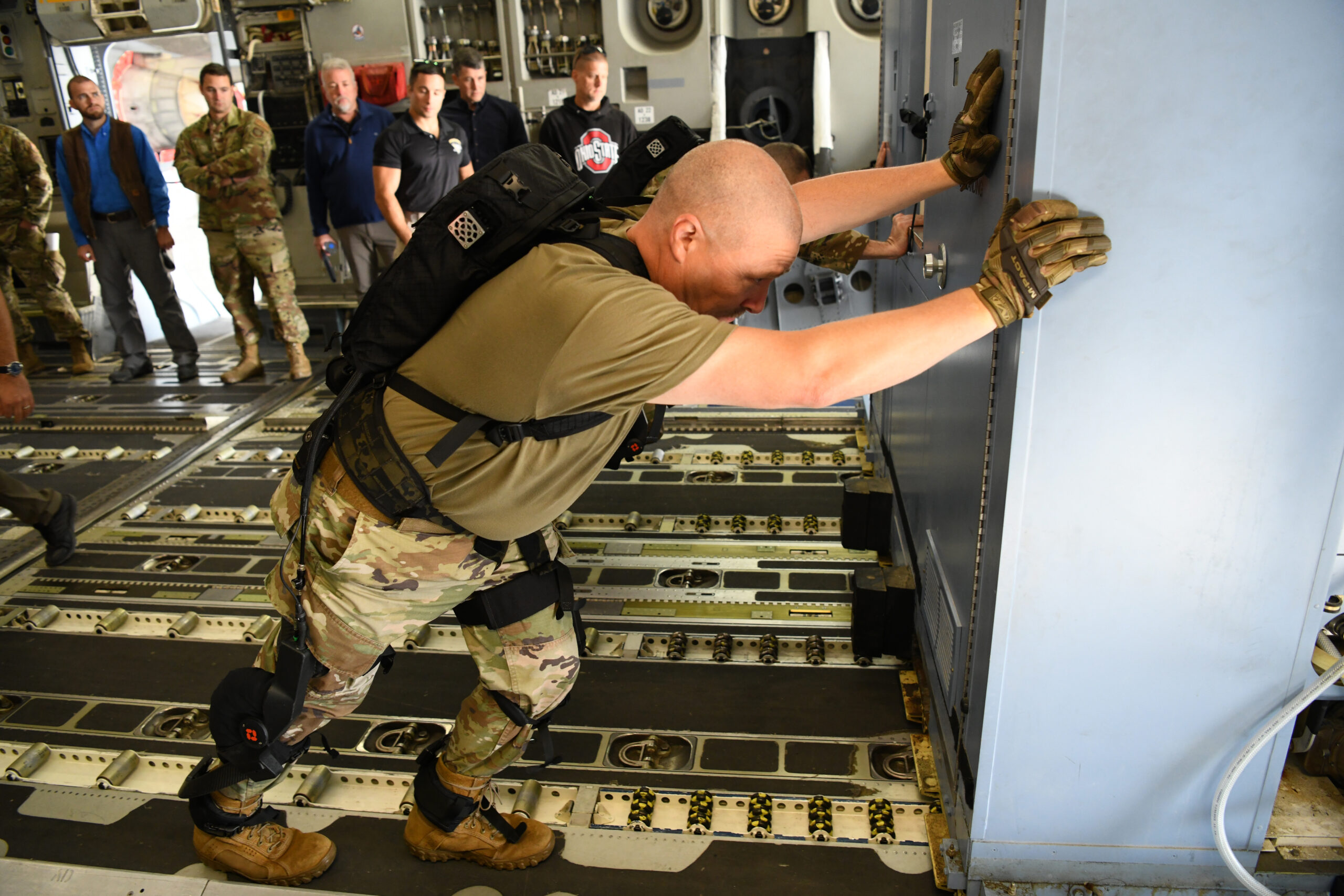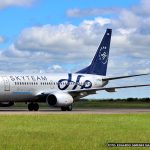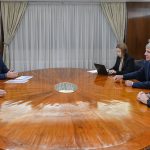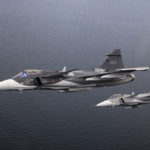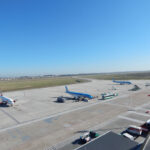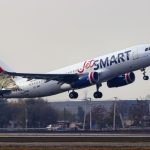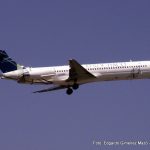Two aerial porters equipped with Force System exoskeletons, during tests inside a C-17, moved the 3,500 pounds (some 1,500 kg) pallet alone, a weight typically moved by four to five people.
Typically, the volume and weight of equipment carried by military transport aircraft, such as the C-17 Globemaster III, requires several cargo operators per flight to push and pull, load and unload.
It is not an easy job, and these people are exposed, during their duties, to their share of injuries, both acute and long-term, which sometimes force them out of careers and sometimes they must even leave the service. The USAF is interested in finding out if exoskeletons can help alleviate this situation and mitigate risks.
The U.S. Air Force Research Laboratory’s (AFRL) Center for Rapid Innovation (CRI) hosted an event Oct. 6 with the Air Force Reserve Command’s 445th Airlift Wing for a team from ROAM Robotics to demonstrate its Forge System, a pneumatically powered exoskeleton that increases leg strength to reduce fatigue, increase endurance and compensate for weight.
After the product presentation, two aerial porters, Master Sgt. Sean Storms and Master Sgt. Brian Anders, donned Forge System exoskeletons, which consisted of actuated leg braces and a backpack, and moved a pallet that weighed about 3,500 pounds. The porters said moving something that heavy would typically take four to five people, but with the exoskeleton system, the two men moved the pallet on their own.
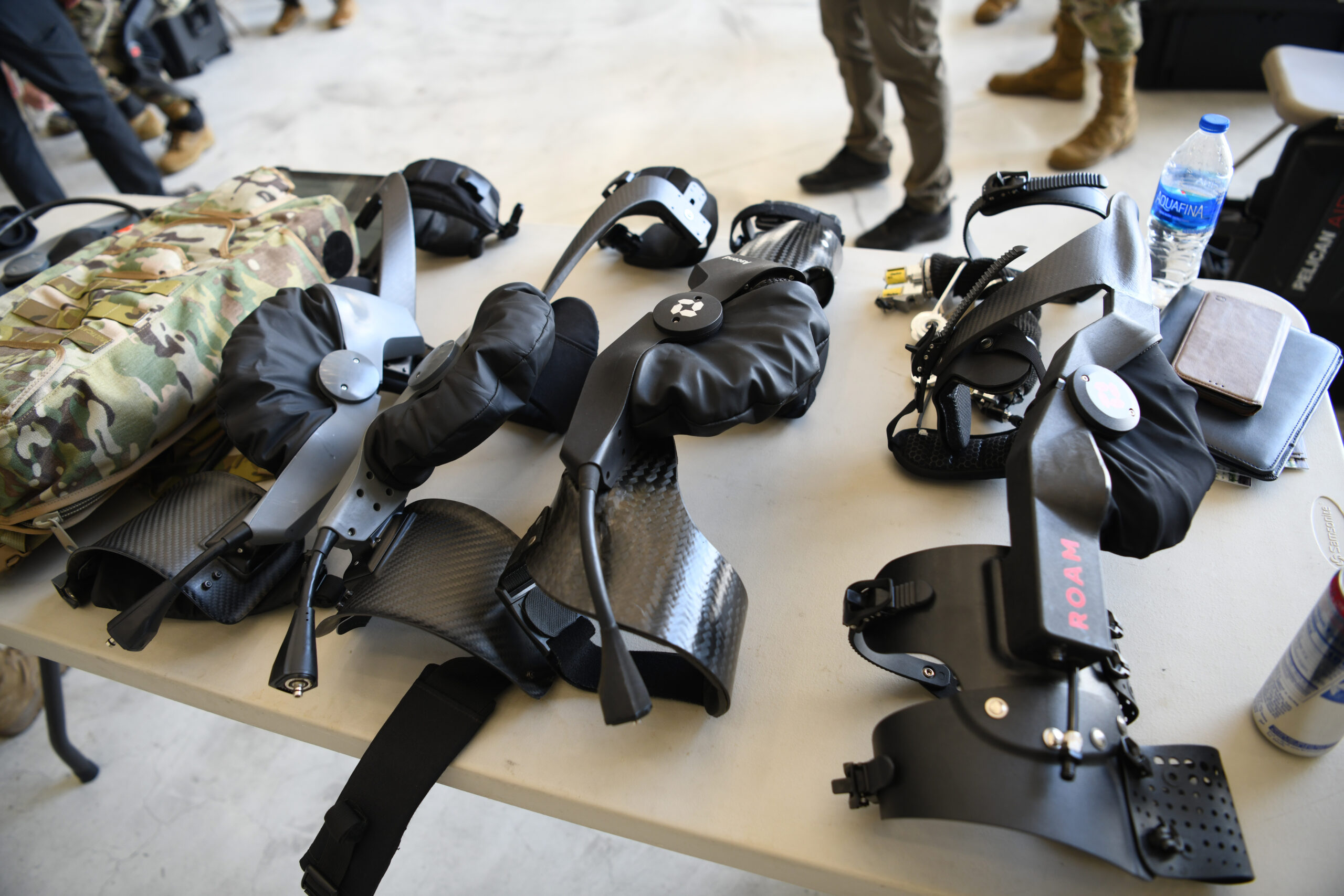
“I can definitely tell a difference; there’s a lot less pressure on my knees and I can feel the assist this system gives,” said Storms.
Following the demo, participants were invited to try out the exoskeleton with assistance by the ROAM Robotics team. Some put it on and climbed a set of stairs in the hangar while carrying weights. Others tested it by pushing a weighted sled across the grass outside or doing squats in the squadron gym. Regardless of the test, participants could hear the exoskeleton’s air bladder actuators engaging as they moved.
John Florio, CRI Deputy Director commented:
“If this is optimized for the aerial porters’ particular missions, it is going to mean that teams will be able to load heavier objects on aircraft much faster using less people, which equates to saving the government and taxpayer money”. “But the biggest game changer for the Air and Space Forces is less injuries to personnel, which can lead to longer careers”, then he added.
The technology will also be studied for other uses, such as to facilitate the work of aeromedical personnel when transporting wounded combatants on stretchers, or to enable ammunition handlers to transport and stow ammunition more quickly and effectively.

